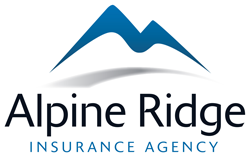Understanding the insurance differences between towable trailers and motorhomes is essential for making informed coverage decisions. At Alpine Ridge Insurance in Auburn, WA, we help RV enthusiasts navigate these distinctions to ensure they receive the right protection for their specific type of recreational vehicle.
Coverage Structure Differences
Motorhomes require comprehensive auto insurance policies because they are self-propelled vehicles. This includes liability coverage for bodily injury and property damage, collision protection, and comprehensive coverage for theft or weather-related damage. These policies also cover the vehicle’s engine, transmission, and other mechanical components. Towable trailers, on the other hand, are typically covered under your existing auto policy while being towed. However, this coverage is often limited and may not protect the trailer itself when it is unhitched.
Liability and Usage Considerations
Driving a motorhome requires liability coverage that accounts for the vehicle’s size, weight, and potential for causing damage. Liability limits for motorhomes are often higher than those for standard car insurance due to these factors. Towable trailers present different challenges, as your tow vehicle’s insurance may provide some liability coverage while towing, but gaps can exist when the trailer is parked or stored separately.
Storage and Personal Property Protection
Both motorhomes and towable trailers require consideration for storage situations and personal belongings. Motorhomes need year-round coverage because they contain expensive mechanical systems that can be damaged even when parked. Towable trailers may qualify for reduced coverage during storage periods, potentially lowering costs during off-seasons.
Getting the Right Coverage
The insurance needs for motorhomes and towable trailers vary significantly in complexity and cost. Don’t assume that one-size-fits-all coverage will adequately protect your investment. Contact Alpine Ridge Insurance in Auburn, WA, to discuss tailored coverage options that match your specific RV type and usage patterns.































